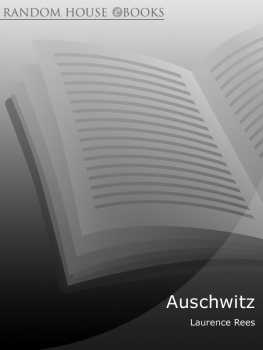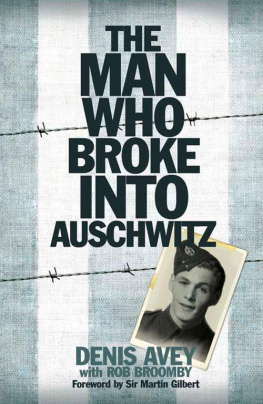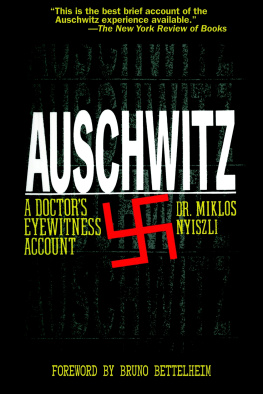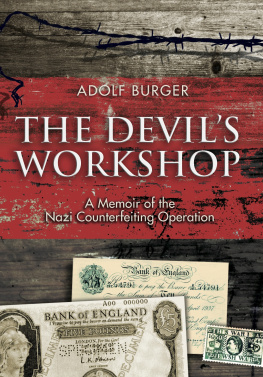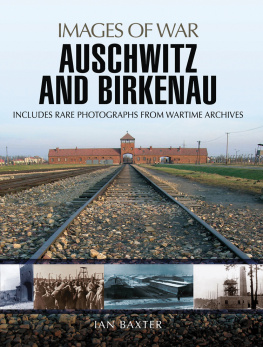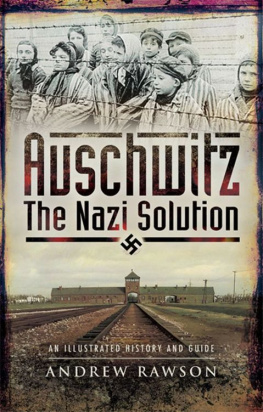First edition published in 2016 by
Berghahn Books
www.berghahnbooks.com
2016, 2017 Nicholas Chare and Dominic Williams
First paperback edition published in 2017
All rights reserved. Except for the quotation of short passages
for the purposes of criticism and review, no part of this book
may be reproduced in any form or by any means, electronic or
mechanical, including photocopying, recording, or any information
storage and retrieval system now known or to be invented,
without written permission of the publisher.
Library of Congress Cataloging-in-Publication Data
Chare, Nicholas, author.
Matters of testimony: interpreting the scrolls of Auschwitz.
pages cm
Includes index.
ISBN 978-1-78238-998-9
(hardback: alk. paper) -- ISBN: 978-1-78533-352-1 (paperback) -- ISBN 978-1-78238-999-6 (ebook)
1. Birkenau (Concentration camp). 2. Sonderkommandos--Poland--Oswiecim-
Biography. 3. Holocaust, Jewish (1939-1945)--Poland--Oswiecim--Personal narratives.
4. Auschwitz (Concentration camp) I. Williams, Dominic, author. II. Title.
D805.5.B57C43 2015
940.531853858--dc23
2015013049
British Library Cataloguing in Publication Data
A catalogue record for this book is available from the British Library
ISBN: 978-1-78238-998-9 (hardback)
ISBN: 978-1-78533-352-1 (paperback)
ISBN: 978-1-78238-999-6 (ebook)
Preface
Matters of Testimony centres upon a set of manuscripts written over seventy years ago by members of the Sonderkommando who worked in the crematoria at Birkenau. These writings, commonly referred to as the Scrolls of Auschwitz, were then carefully buried beneath ashes and earth in the hope they would one day be discovered. The grounds of the crematoria, of necessity, became the initial site for this unique archive of barbarism. These remarkable witness accounts, furtively written by men trapped at the core of a death factory, while distinctive in many ways are also like all Holocaust testimony in that they require responsibility and sensitivity of their readers. The Scrolls were therefore sometimes daunting to engage with. They provide eyewitness accounts of the most horrendous events and pose complex, at times very troubling, questions about the nature and limits of testimony. The physical documents, distressed and fragmentary, seem haunted by their authors and the circumstances in which they wrote. They are unnerving to touch.
The Scrolls comprise demanding material, and our readings of them have emerged from complex, usually exceptionally fruitful, and even occasionally fraught, sets of discussions and negotiations between us over materials and meanings. Some chapters include more input by one or other of us, but the book is a genuine collaborative enterprise. The primary responsibility for research and writing was taken by Nicholas Chare for this book therefore stands as a positive example of what transdisciplinary scholarship can achieve.
We wish to thank the British Academy and the Elisabeth Barker bequest for their help in facilitating much of the research behind this book. We are indebted to the Auschwitz-Birkenau State Museum and, in particular, to Wojciech Posa and Agnieszka Sieradzka for assistance during our visits to archives there. We are also grateful to the staff at the Jewish Historical Institute in Warsaw, especially Micha Czajka and Agnieszka Reszka; at Royal Holloway Library, especially Russell Burke; and at the Wiener Library, London. Bruce Levy of the United States Holocaust Memorial Museum kindly helped us with our enquiries about the Shoah archive. Our work benefited greatly from the advice of Justin Clemens, Aurlia Kalisky, Marcel Swiboda and Miriam Trinh, who read and commented on draft chapters. Nikos Papastergiadis and Chrisoula Stamoulis are to be thanked for generously translating Marcel Nadjarys letter into English for us, and Alex Emmanuel provided invaluable commentary and translations of Nadjarys post-war account. Krzysztof Majer speedily helped us with last-minute queries about Polish. Thanks to Daniel Heller for his advice on the Betar movement in interwar Poland, and to Ruth Marcus for dealing with specific questions on Zalman Gradowski. Nasser Hussain, Robert Stanton and James Ward offered keen-eyed and -eared stylistic advice. Many other individuals contributed to the genesis of this book. We are deeply appreciative of the intellectual and, often, practical support of Suzannah Biernoff, Sara Chare, Esther Chare, Bryan Cheyette, Maria-Luisa Coelho, Vanessa Corby, D. Ferrett, Anne Freadman, Cathy Gelbin, Benjamin Hannavy-Cousen, Jemma Hefter, Eva Hoffman, Anne Karpf, Peter Kilroy, Silvestra Mariniello, Milena Marinkova, Maria Mileeva, Jane Moody, Angela Mortimer, Peter Otto, Sue Vice, Emma Wilson and Roy Wolfe. Particular gratitude for their encouragement and selfless sharing of insights goes to Griselda Pollock and Dan Stone. We are also obliged to Tag Gronberg for inviting us to Birkbeck to present work-in-progress. Additionally, Jacqueline Rose is owed considerable appreciation for encouraging further research into the Scrolls of Auschwitz. Without her wise words of inspiration, this project would not have happened.
We are very grateful to Marion Berghahn who first encouraged us to submit a proposal for the book and was then a source of support throughout its production. We are also grateful to Chris Chappell, Charlotte Mosedale, Nigel Smith, Ann Przyzycki DeVita and Molly Mosher at Berghahn Books for their help at various times during the production process.
Technicalities
Very occasionally in the endnotes [NC] or [DW] appears at the end of a body of text by one or other of us writing as an individual.
The crematoria at Auschwitz-Birkenau have been described by two numbering systems. The one used by the Auschwitz museum and most historians (which also appeared on the designs) includes the crematorium at Auschwitz I Stammlager, which it counts as Crematorium I. The other is that used by the Sonderkommando themselves, which counted only the four crematoria in Birkenau. We have adopted what we think is the simplest and clearest method to distinguish these two systems. The Sonderkommando used Arabic numerals for the crematoria, and we have maintained these numbers in the same form in our quotations. In all other places, following the most common practice, we number the Birkenau crematoria IIV, using roman numerals. Thus, the crematorium that was burnt during the October uprising will be referred to as Crematorium 3 in direct quotations from the SK, and Crematorium IV elsewhere.
In quoting from often badly damaged texts, it is sometimes necessary to indicate gaps in the manuscript (where words have not been deciphered), and also where conjectures have been included. We have tried to make it as intuitive as possible, but explain the use of symbols here:
***** | For a lacuna (gap). This symbol gives no indication of how big this gap is. In most cases the line numbers in the reference give an indication of it size. |
One word missing. |
< > | Angled brackets indicate a conjecture. If the reference is to the MS, it is our own. If the reference is to an edition, it is to its editors. |


